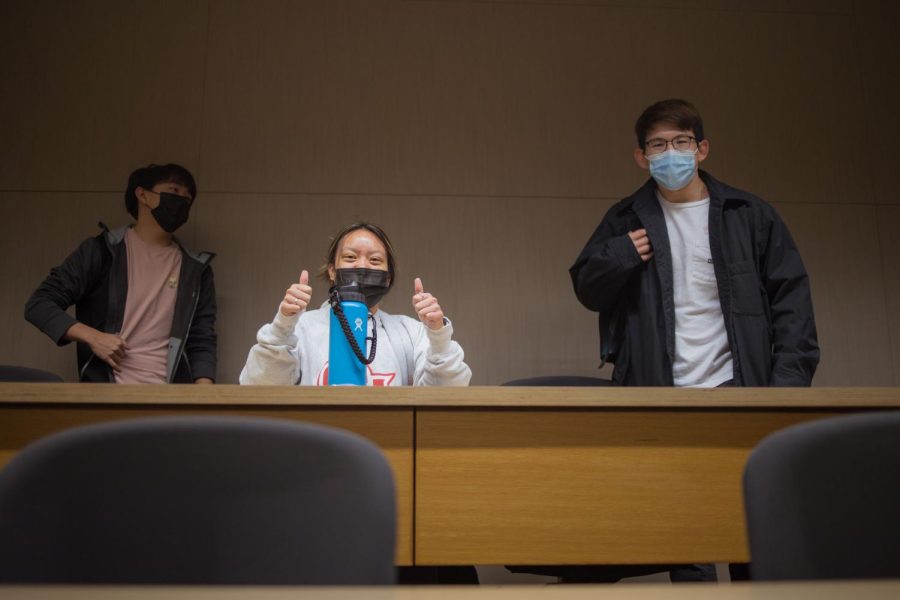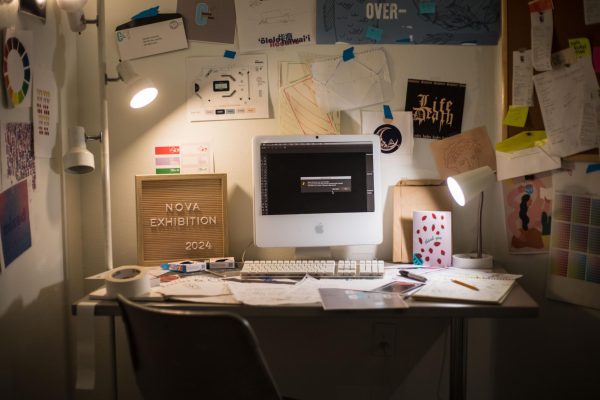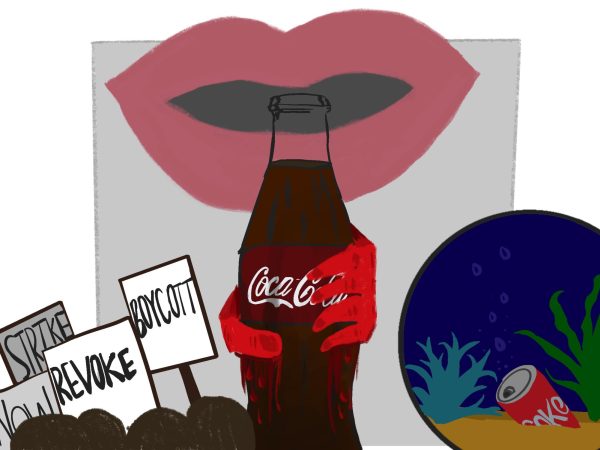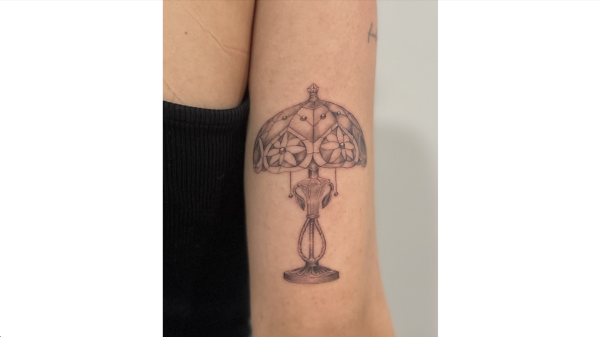Redhawks Return to the Nest after Several Weeks Online
Students (from left to right) Josh Park, Kat Javier, and Tyler Ouchida in in-person class.
Less than two weeks before classes were set to resume for winter quarter Jan. 3, Seattle University President Eduardo M. Peñalver sent an announcement to students, faculty and staff informing them that most classes would be virtual for the first week. This announcement was followed by another message from Peñalver, detailing how the university would continue its policy of virtual instruction, apart from labs and clinical placements, throughout the month of January.
This decision to begin the winter quarter online has been both understandable and frustrating, particularly among the student body. Outside of first-years and transfer students, many people remember the online learning that dominated last school year and were hopeful about in-person instruction being the standard this academic year.
“I understood why they made the decision for us to start the quarter online, but it was definitely still frustrating,” Second-year Computer Science major Campbell Stewart said. “I felt like it was respectful of everyone coming back from the holidays along with the rising level of cases associated with omicron, although I definitely wish they had given more warning. That aspect felt unfair.”
As the university makes its way towards mid-February, thanks to campus-wide effort and dedication to safety, the vast majority of classes are back to in-person instruction. For many students, including second-year Nursing student Sophie Wankel, there is a consensus that in-person classes trump being online. Wankel had a mix of in-person clinical placements, alongside online instruction.
“I feel like I can maintain better focus and don’t feel nearly as tired by the end of the day,” Wankel said. “Zoom classes are physically exhausting as you’re just sitting behind your computer day in and day out, having class and then doing homework in the same spot. Being able to be in class and engage with my classmates and professors definitely helps me learn and makes me much more excited to be here.”
Conversely, there was some dissent within the campus community regarding the decision to come back amid the unknowns of the omicron variant. Following the decision to return, a student-led petition circulated across campus with a strong message to remain online.
“We have to make the decision for all 7,300 students who we have, and we can’t be driven to a decision by a very small percentage of the student body who have a concern,” Joseph M. Phillips, the dean of the Albers School of Business and Economics, noted in reference to the petition against the return to in-person instruction. “Obviously we want to accommodate everyone’s interests, but it is very clear to me that the vast majority of students are glad to be back.”
Sections of the university, including the College of Nursing, drafted responses to the petition which were sent to students.
“People didn’t want to be in person, and that they felt it was an unsafe decision for themselves as well as those they might interact with who are immunocompromised,” Wankel said upon receiving the petition alongside other members of her nursing cohort. “In response to the petition, the heads of the nursing program said that even with the rising case levels, as long as we are masked and trying to maintain distance along with exposure tracking, there is really no increased risk in having instruction be in person.”
As a Jesuit institution, Seattle U holds itself to certain standards of Cura Personalis, caring for the whole person. With this in mind, decisions concerning health and safety are never easy, especially when they are weighed against education. In making choices aimed at being the best for the campus community, several perspectives must be taken in along with the majority consensus and public health statistics.
“We made good science-based decisions balancing health and safety with what we’re trying to do connecting with and educating students,” David Powers, the dean of the College of Arts and Sciences said. “In today’s world, there is nowhere in our lives disconnected from health and safety. This means that it’s about how much risk is involved and how safe we can make things.”
Throughout the month of January, COVID-19 levels did not decline in a straight line. However, as of the publishing of this article, the daily average number of new reported cases within King County stands at 1,298. This is a 70% decrease over the past 14 days. The peak for King County came around Jan. 10, where the daily average hit 5,786 new cases.
“The university is relying on its own data as well as King County data and infectious disease experts within the local community,” Phillips said. “All of it being used to forecast and provide insight on where things are headed.”
It is because of this level of prudence that classes have been able to return to in-person instruction. After the initial decision to begin the first week of classes online, the omicron variant tore through the Seattle area, which would have posed a major challenge to classroom instruction.
“I feel very confident in the decision to return to in-person instruction,” Phillips said. He was also sure to mention that this is an ongoing situation. “Certainly if things are to change, the university won’t hesitate to turn around and go virtual again. I don’t see any evidence that will happen, but we will all be watching very carefully and won’t be afraid if another decision has to be made.”
Through the first couple of weeks being back in person, the general message has been loud and clear: students and faculty are thrilled to be back. Michael J. Quinn, dean of the College of Science and Engineering had the opportunity to listen to feedback from his student advisory board upon returning.
“I have been hearing quite a lot of positive feedback from those who have been able to go back to in-person classes,” Quinn said.
While undergraduate students clamor for the connections and academic atmosphere of the traditional college experience, graduate programs have adjusted well to the shift online. Given that many graduate students are not full-time scholars, the university has maintained virtual instruction for certain programs.
“At the graduate level, it can be different because we have people with families and jobs and there can be a lot more of a plus side to being online,” Powers said while comparing the benefits of online compared to in-person instruction. “For graduate students, programs can be so different from each other that it makes sense for some to function remotely.”
For undergraduate students, who make up over 55% of Seattle U’s student body, being back in person has not only brought life back to campus, but has helped students to improve in their classes.
“I feel like it is much more rewarding to be back in person. It gives me my passion back to continue to do what I came here for,” Stewart said. “My major felt a bit dull to me when being online, I wasn’t applying myself as much because there was so much more access to distractions. I have seen both my focus and my grades go up since being back in person.”
As the university looks ahead to its future in a COVID-19 landscape, and eventually a post-COVID-19 context, there are certain commitments that it strives to hold on to, including shaping students both intellectually and spiritually.
Despite the challenges posed by the pandemic, Seattle U’s mission remains to be a campus community in which connections are built and knowledge is transferred to transcend this small community and engage with the world at large.
“We will not be a school that will, after this, decide to be a remote online school,” Powers said. “It does not capture who we are. It’s not what people want when they come here.”
While dissent lingers, support still grows along with the energy students have gained in their return to in-person classes. There is no easy road paved ahead. The university remains poised to adapt and respond to situations as they develop, with the hope of making scientifically based decisions centered around a care for the campus community.











